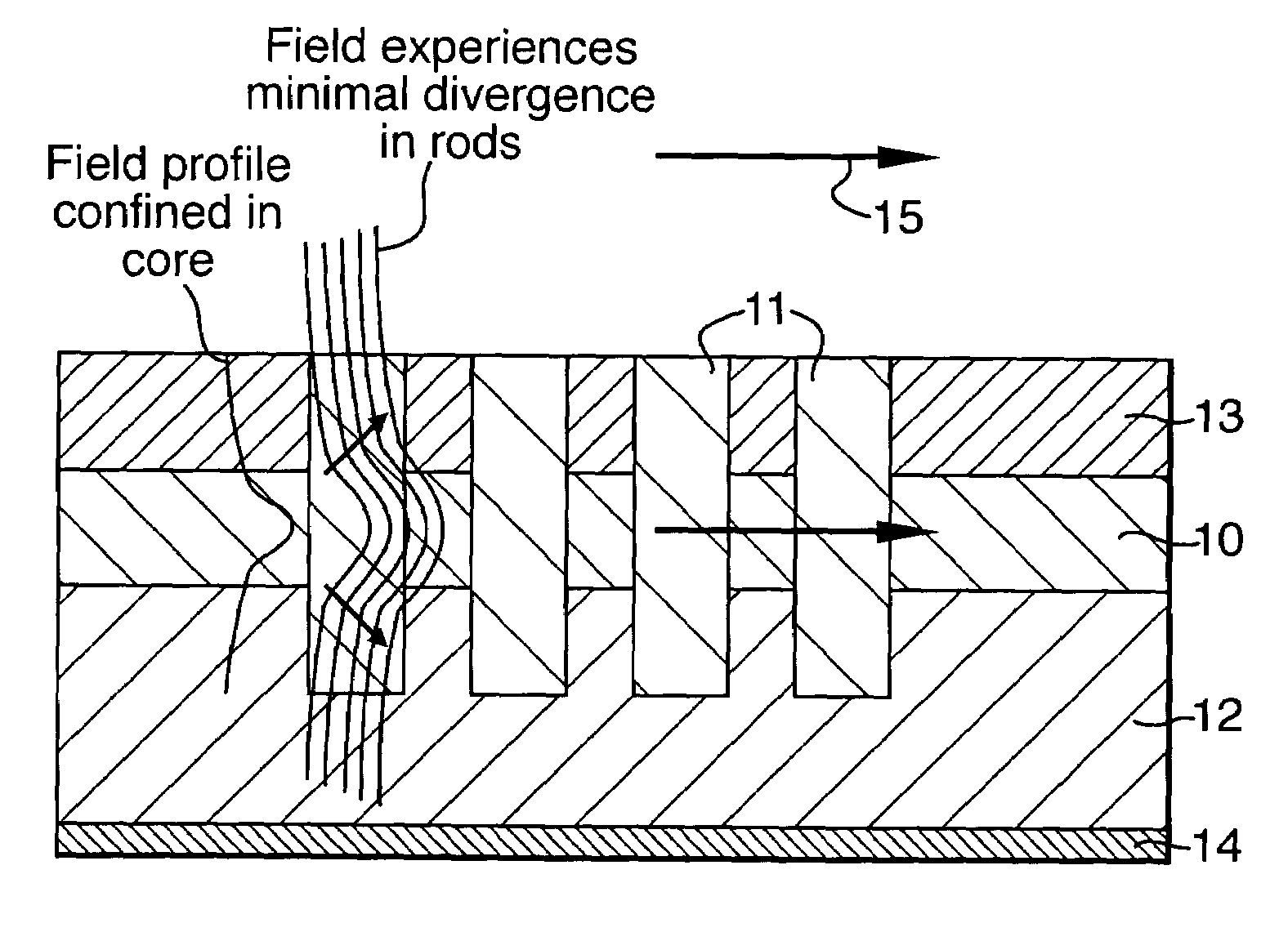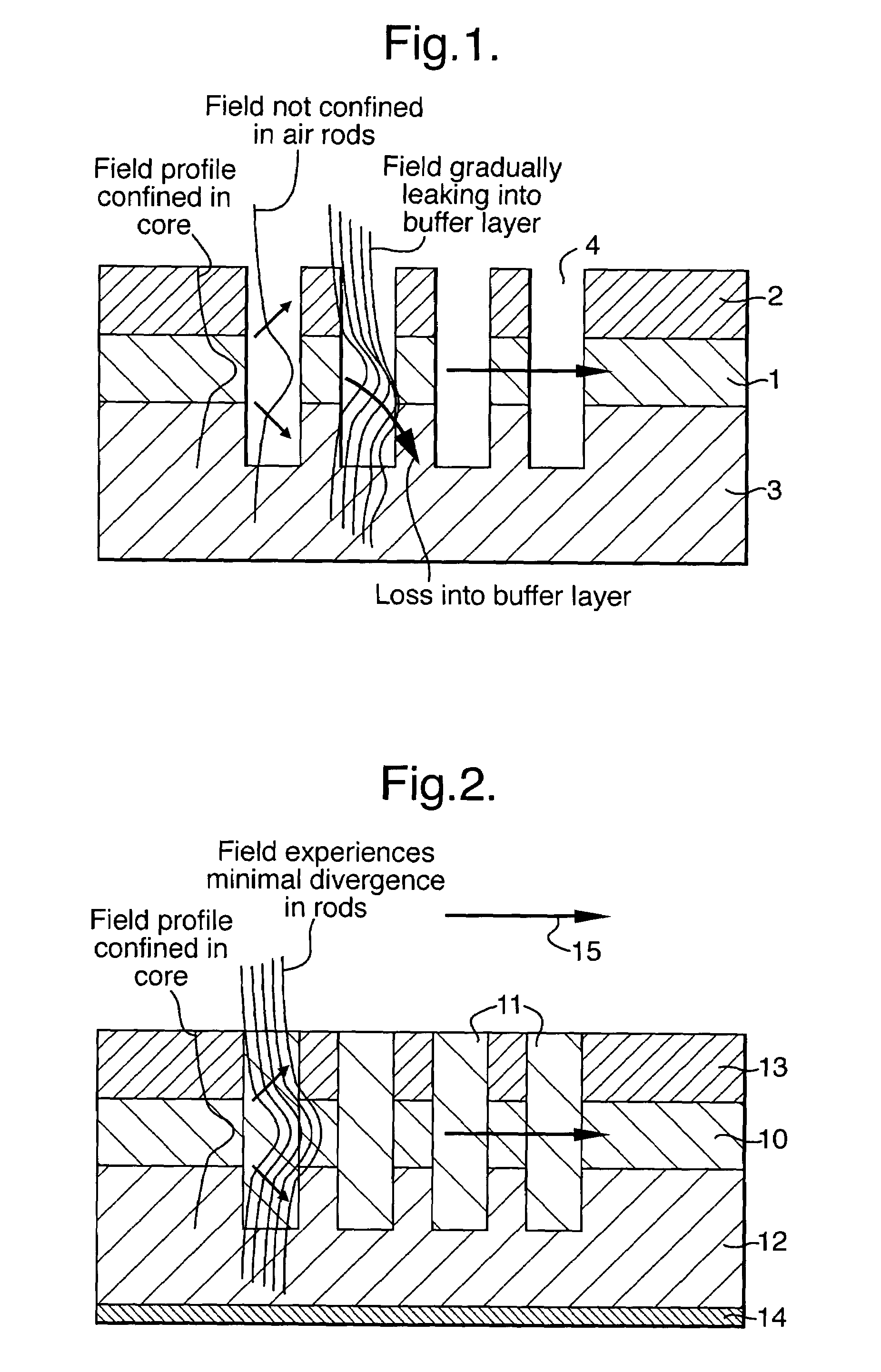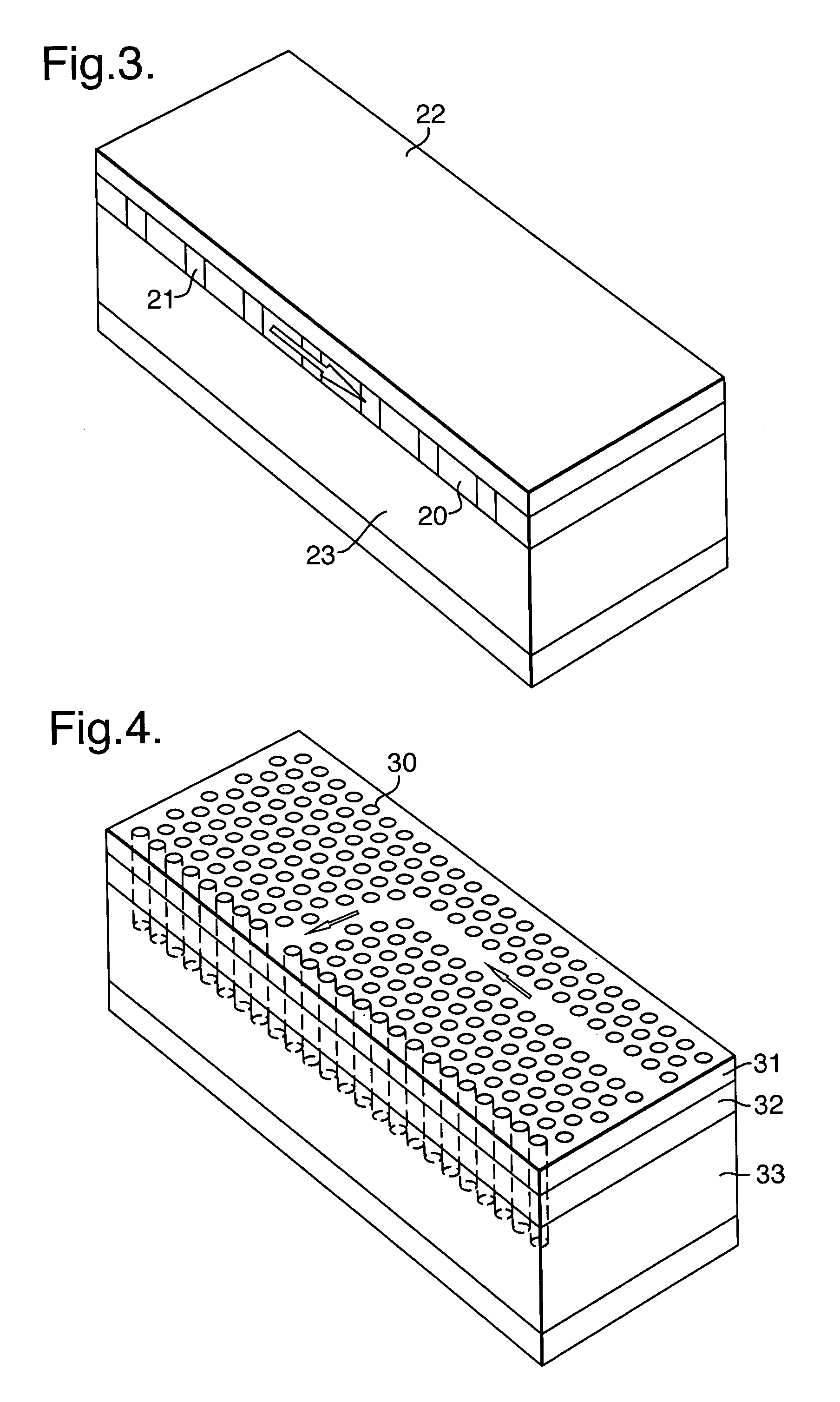Optical waveguide structure
a waveguide and optical waveguide technology, applied in the field of optical devices, can solve the problems of not being able to achieve the same functionality, and achieve the effects of reducing the coupling of light into the buffer and the cladding layer, reducing the sub-region index, and reducing the out-of-plane divergence of light in the sub-region
- Summary
- Abstract
- Description
- Claims
- Application Information
AI Technical Summary
Benefits of technology
Problems solved by technology
Method used
Image
Examples
Embodiment Construction
[0052]Photonic crystal waveguide structures are based on some perturbation in dielectric constant in the core of a planar waveguide structure. This has most commonly been performed by the etching of air rods into the core layer of the waveguide. As light propagates through the core it interacts with the dielectric constant modulation and, in some structures, in a manner analogous to electrons in a semiconductor, certain electromagnetic fields are forbidden to propagate in the core. The forbidden electromagnetic fields form a photonic bandgap. More detail on the nature of the band structure of photonic crystals of this sort can be found in WO98 / 53351.
[0053]FIG. 1 illustrates the interaction of the E-field with the core 1 in a photonic crystal according to the prior art. The light is travelling through the core 1 from left to right. A profile of the E-field within the core 1, cladding 2 and buffer 3 layers is shown. It can be seen that in the photonic crystal region the mode confineme...
PUM
 Login to View More
Login to View More Abstract
Description
Claims
Application Information
 Login to View More
Login to View More - R&D
- Intellectual Property
- Life Sciences
- Materials
- Tech Scout
- Unparalleled Data Quality
- Higher Quality Content
- 60% Fewer Hallucinations
Browse by: Latest US Patents, China's latest patents, Technical Efficacy Thesaurus, Application Domain, Technology Topic, Popular Technical Reports.
© 2025 PatSnap. All rights reserved.Legal|Privacy policy|Modern Slavery Act Transparency Statement|Sitemap|About US| Contact US: help@patsnap.com



